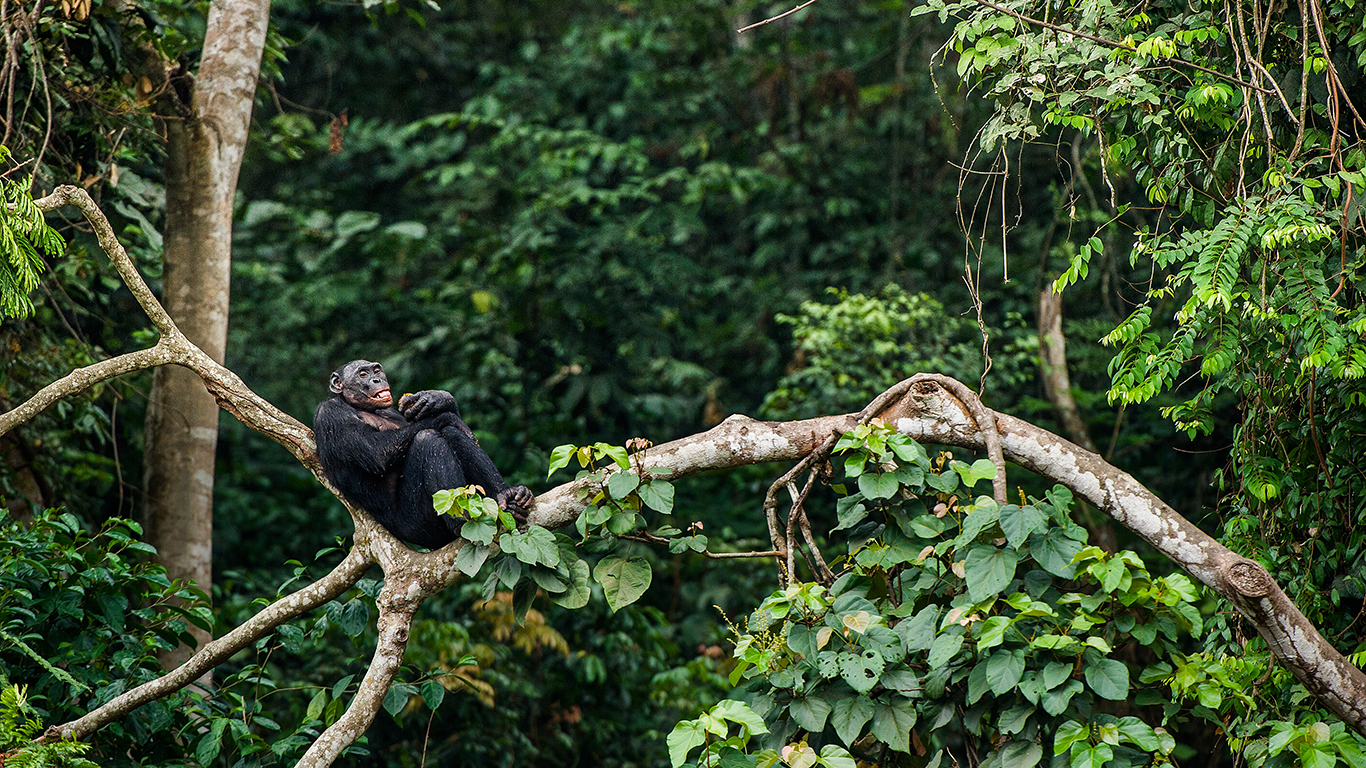
It’s hard to talk about the rainforests without an abundance of superlatives and mind-boggling statistics coming in to play.
Within these unique environments exist a 300-mile-wide river (the Amazon), the most orchid species in the world (New Guinea Rainforest), 10,000 animal species (Congo Basin), and land that’s been continuously forested for 160 million years (Daintree). There are types of flora and fauna that have never been documented, and species we know basically nothing about beyond the most general description.
All of the rainforests on Earth are under pressure. We’re losing 18.7 million acres of forests annually – that is 27 soccer fields every minute. Logging, road building, urban sprawl, agriculture, introduction of invasive nonnative species and climate change are just a few of the elements that negatively impact these magical and mysterious places.
Rainforest denizens from the majestic tiger to our fellow hominids the orangutans are among the endangered, along with countless varieties of plant and animal life. As many as 1 million plants and animals face extinction within just a few decades, and humans are to blame, according to some reports — these are the animals people in particular are driving to extinction.
Why should we care? Why should it matter to us if a tiny rat or a bit of tree moss becomes extinct? Here’s the thing: We don’t know how these natural creatures might benefit our lives. Every day we’re losing species that could cure diseases, feed multitudes, better our way of living or dazzle us with their beauty. These are species we may have lost in the last few years alone.
It’s easy to forget about tropical or temperate rainforests and their significance or magnetism. After all most people live far away from them. Here, we show you a little bit of what we have to lose.
Click here to see the largest rainforests in the world.
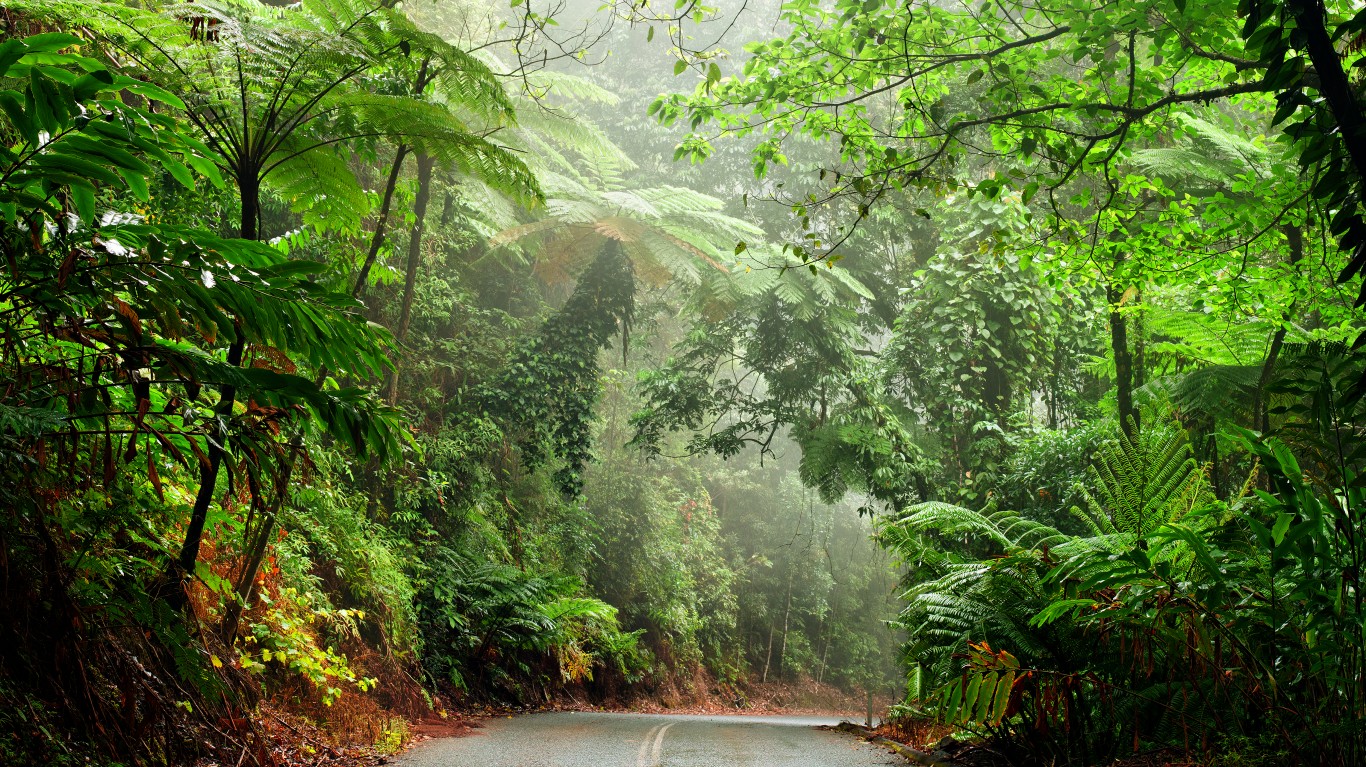
11. Daintree Rainforest
> Size: 463 square miles
> Location: Queensland, Australia
Believed to be the oldest continuously surviving tropical rainforest, Australia’s Daintree has existed for about 150 million years. Though this wet tropics region takes up only 0.1% of Australia’s land, it contains 35% of the country’s frog, marsupial and reptile species; 65% of its bat and butterfly species, 20% of its bird species, and at least 70 endemic animals. UNESCO World Heritage offers protection to some but not all of the Daintree area, leaving it vulnerable to residential development, habitat fragmentation, invasive plant species, and feral nonnative animals.
[in-text-ad]
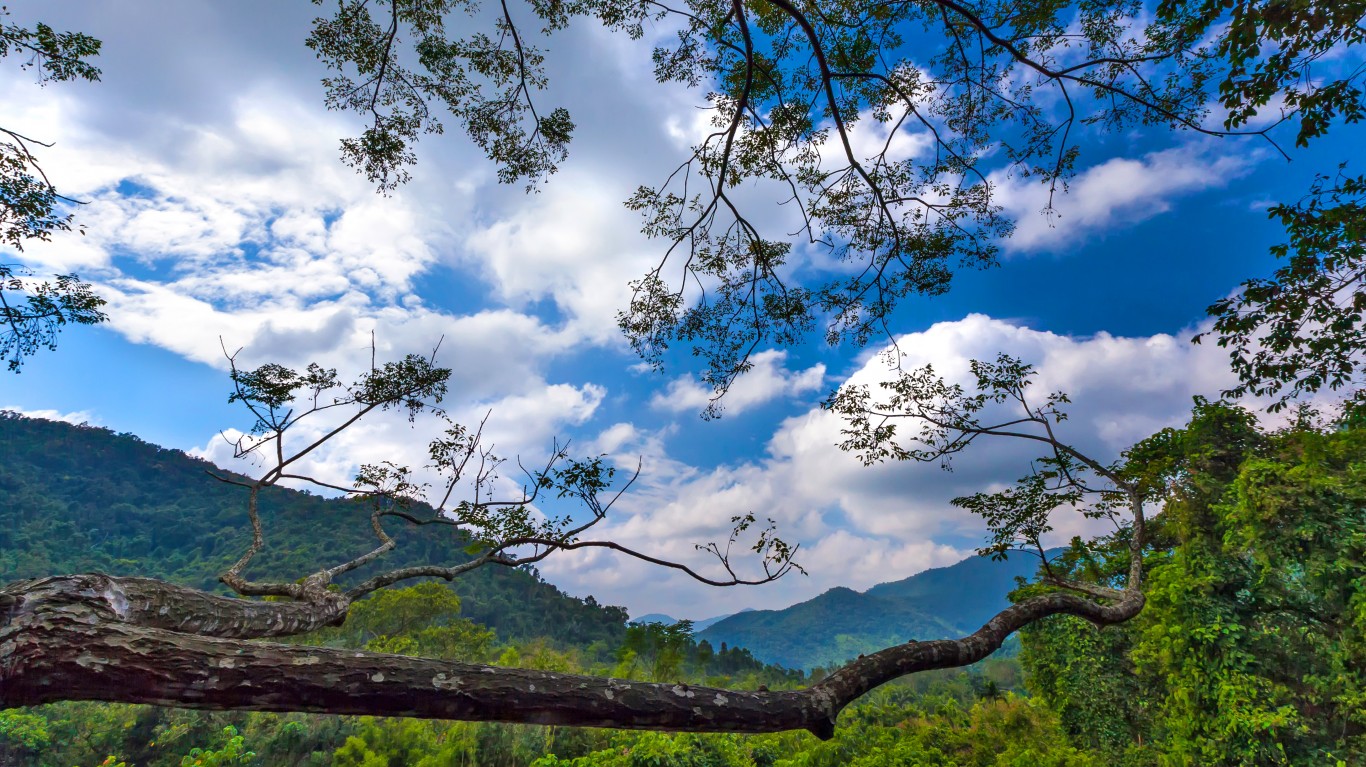
10. Westland Temperate Rainforests
> Size: 4,587 square miles
> Location: South Island, New Zealand
Sited at the collision point of the Pacific and the Indo-Australian crustal plates, steep wooded slopes and deep gorges are features of this dramatic landscape. An estimated 60% of New Zealand’s known species live within the rainforest’s borders. Penguins, butterflies, freshwater fish and more than two dozen threatened bird species find shelter among a variety of forest types from coastal to mountainous, and some of the fastest-moving glaciers on Earth. Predators such as rats, stoats and possums present a threat to wildlife, while deforestation for pastures and pine plantations take their toll on forest and foliage.

9. Bosawás Biosphere Reserve
> Size: 7,722 square miles
> Location: Northern part of Nicaragua
Protected by UNESCO for more than two decades, among its cloud forests, mountain peaks and humid jungles, Bosawás shelters species that have disappeared everywhere else in the region, including jaguars, poisonous snakes, rare mammals, scarlet macaws and scores of migratory bird species. Slash-and-burn clearance for agriculture and grazing livestock are among the dangers to this reserve.
[in-text-ad-2]
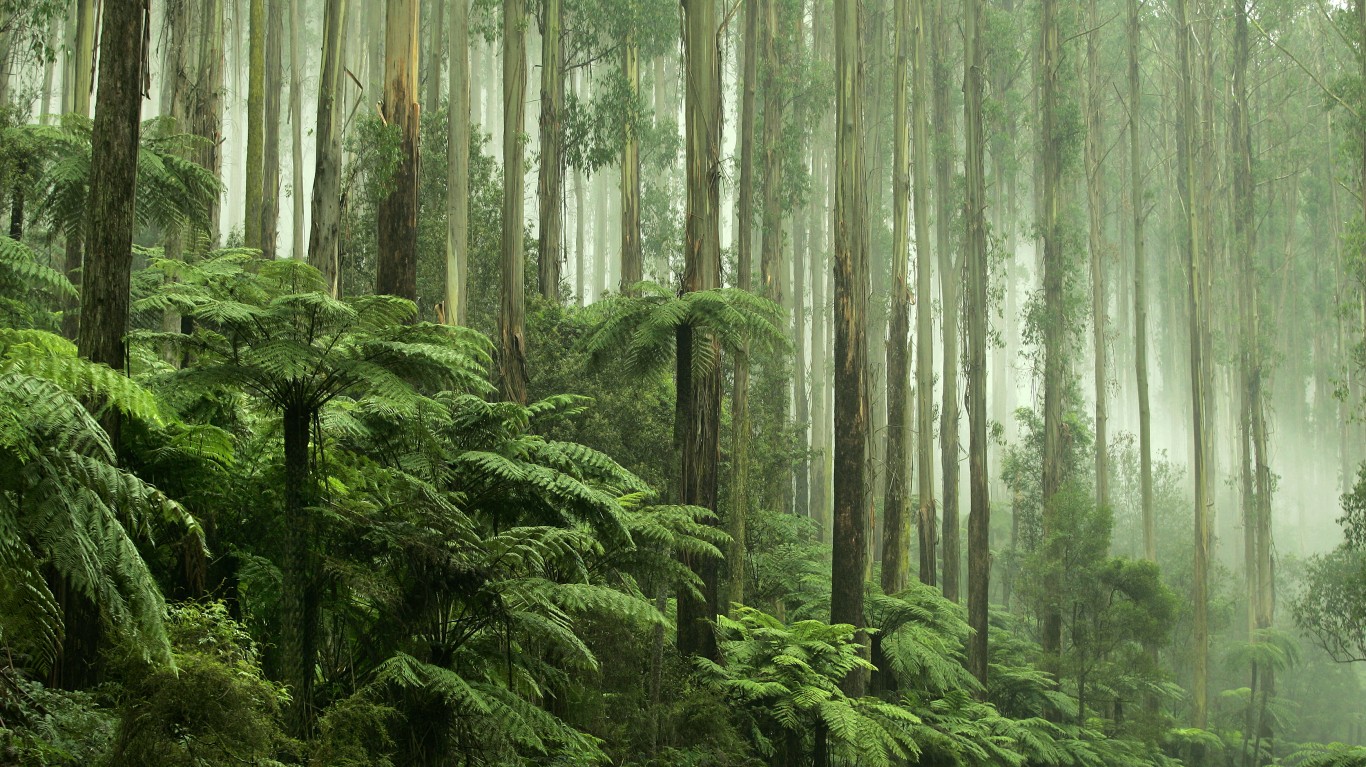
8. Eastern Australian Temperate Forests
> Size: 85,753 square miles
> Location: New South Wales to Queensland, Australia
Coastal plains, cliffs, gorges, mountains, tablelands and freshwater lagoons and lakes are among the varied terrains in this region. The dramatic landscape is inhabited by thousands of varieties of native plants, animals, birds, freshwater fish, reptiles and amphibians, some of which are rare and endangered. Environmental threats include invasive plant and animal species, chemical runoff from agriculture, tourism, fires, and urban encroachment.
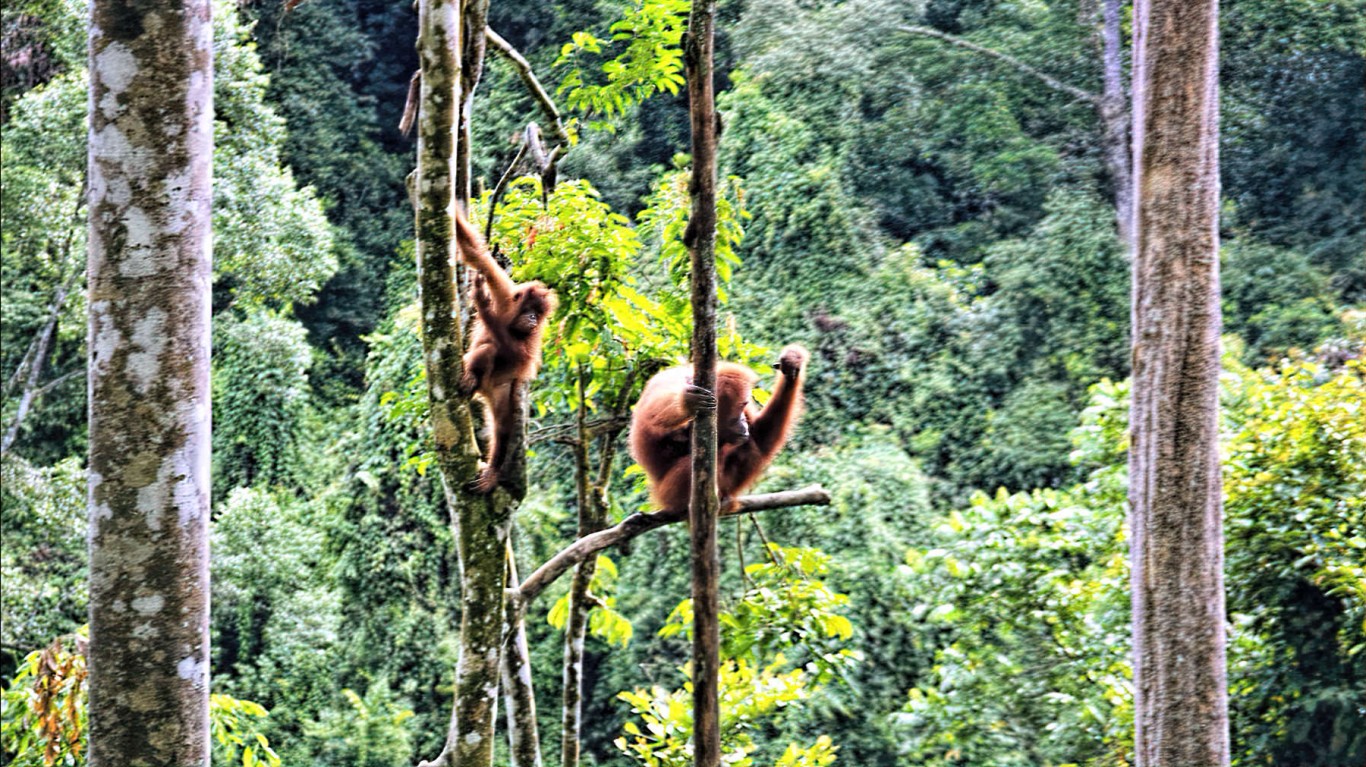
7. Tropical Rainforest Heritage of Sumatra
> Size: 9,653 square miles
> Location: Indonesia
Indonesia’s Tropical Rainforest Heritage of Sumatra shelters species including tigers, rhinos, elephants and orangutans on a UNESCO-protected site. While the island of Sumatra — the world’s sixth largest — was once jungle-covered and packed with indigenous flora and fauna, in the past 35 years almost half of the foliage has been lost to deforestation, taking a toll on the animal populations that once thrived there. The rainforest has been added to UNESCO’s List of World Heritage in Danger because of poaching, illegal logging, agricultural encroachment, and road-building plans.
[in-text-ad]
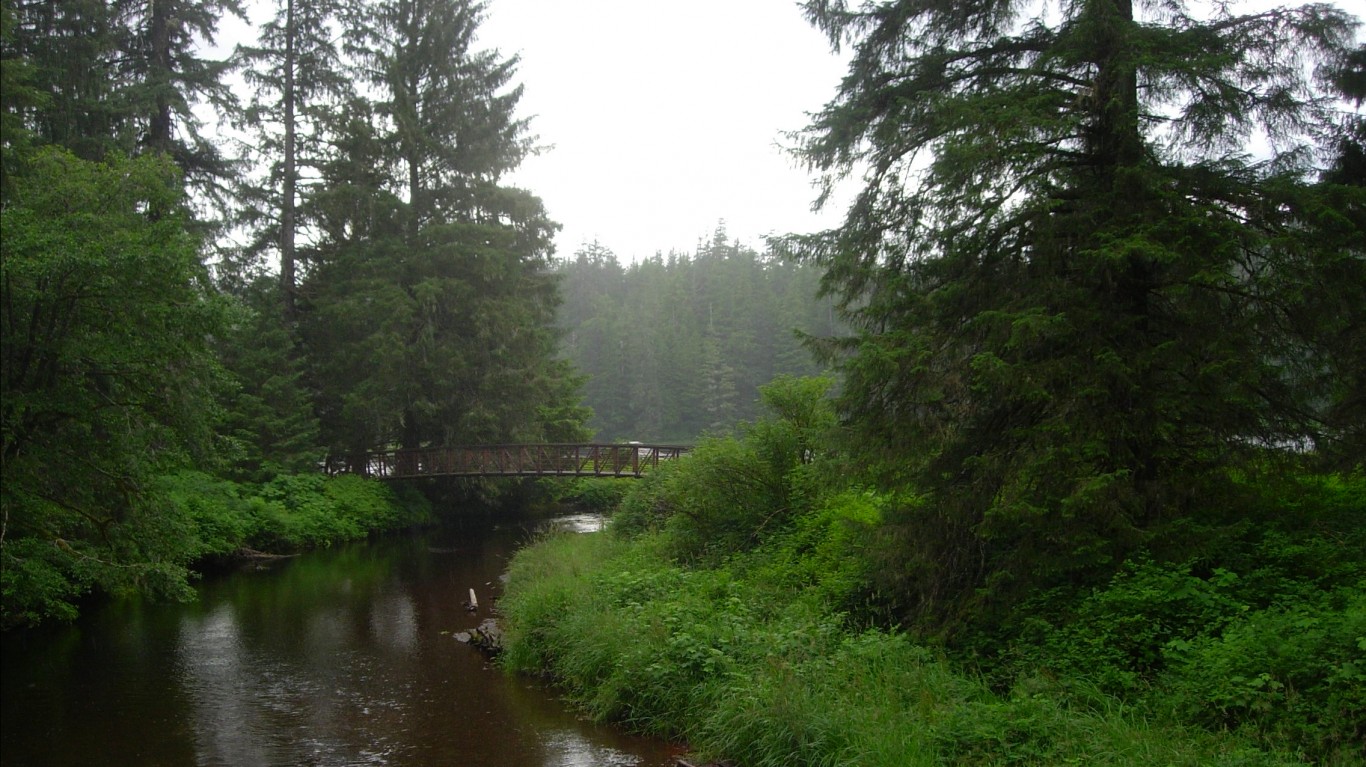
6. Pacific Temperate Rainforest
> Size: 23,300 square miles
> Location: Pacific Coast of North America
Stretching along the western coast of Canada and the U.S., from southeastern Alaska to the northern reaches of California, the Pacific Temperate Rainforest is the biggest of its kind on Earth. Bears, salmon, trout, elk, eagles, tree frogs and more live among the big-leaf maples, cedar, alder, Sitka spruce, Douglas firs, and a hundred types of moss. Encompassing major undeveloped areas including the Tongass National Forest and the Great Bear Rainforest, the region contains glaciers, lakes, old-growth forests and wild fisheries. Clearing trees for logging and road building are among the threats to this unique ecosystem.

5. Heart of Borneo
> Size: 84,942 square miles
> Location: Indonesia, Brunei and Malaysia
Among the world’s oldest rainforests, the evocatively named Heart of Borneo in Southeast Asia has been around for an estimated 140 million years. Though it comprises only about 1% of the Earth’s terrain — spanning Indonesia, Brunei and Malaysia — it contains roughly 6% of the world’s living species, including elephants, orangutans, tropical trees and exotic flowers. The Heart of Borneo has dwindled dramatically, losing more than 30% of its size in the past four decades, under pressure from timber, palm oil, pulp, rubber and mineral production.

4. Valdivian Temperate Rainforest
> Size: 95,792 square miles
> Location: Chile, Argentina
Located on a narrow strip of terrain between the western Andes Mountains and the Pacific Ocean, the Valdivian Temperate Rainforest has been called the rainforest at the end of the world. The southernmost rainforest on the globe spans Chile and Argentina, and contains four forest ecosystems: Patagonian Andean, Northern Patagonian, deciduous, and laurel. There’s an abundance of ferns, bamboo and evergreens, with more than half of all growth unique to the region. However, the native species are endangered by the logging industry, which is pushing to plant faster-growing trees that can be quickly harvested for pulp and papermaking.
[in-text-ad-2]

3. New Guinea Rainforest
> Size: 111,197 square miles
> Location: Papua New Guinea
Comprising 65% of the land on New Guinea, the world’s second-largest island, the New Guinea Rainforest is home to creatures and plants found nowhere else on Earth. The largest rainforest in the Asia-Pacific region contains tree kangaroos, birds of paradise and rare orchids, as well as a genetically unique human population. The diversity here is so great that researchers have barely scratched the surface in documenting species.
The rainforest, which covers parts of Indonesia and Papua New Guinea, is facing a severe threat from a projected 2,700-mile highway, which has been under construction since 2013. In addition to construction-related deforestation, the roads will destroy habitats, open pristine regions to mining and industry, and increase the likelihood of toxic runoff that could damage coral reefs off the coast.

2. Congolese Rainforest
> Size: 687,262 square miles
> Location: Congo Basin
The fabled Congolese Rainforest, the world’s second largest, is home to an estimated 600 species of trees and a staggering 10,000 animal species, including elephants, gorillas, chimpanzees, leopards, and hippos. Encompassing parts of Cameroon, Gabon, Republic of the Congo, Democratic Republic of the Congo, Central African Republic, and Equatorial Guinea, in recent decades the region has enjoyed the lowest deforestation rate among the major rainforests. Subsistence farming, fuel wood, urban expansion and mining are responsible for most of the current deforestation. However, industrial logging is proving an increasing threat to plants and animals alike: Poachers and commercial hunters have increased access to animal habitats via proliferating logging roads, resulting in a significant drop in the forest elephant population in less than a decade.
[in-text-ad]
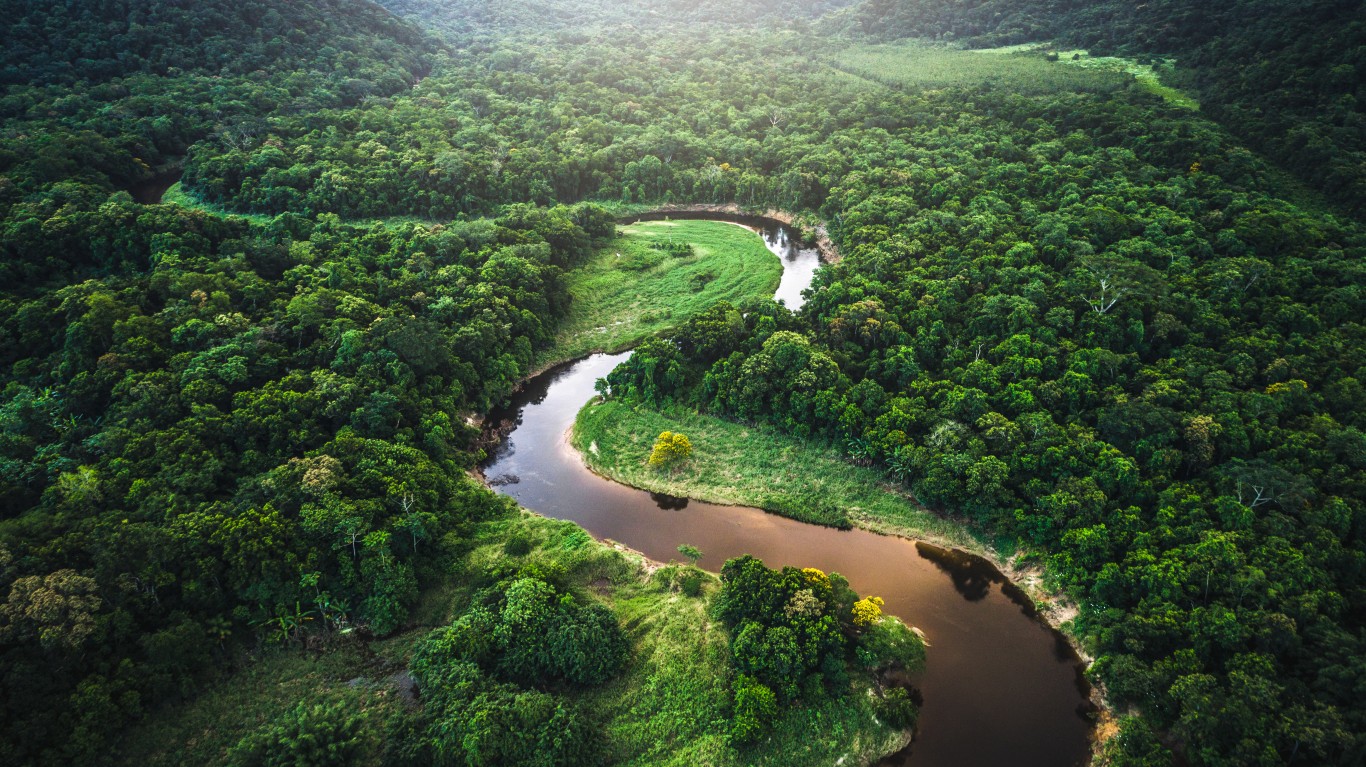
1. Amazon Rainforest
> Size: 2,123,561 square miles
> Location: Brazil, Peru, Colombia, Venezuela, Ecuador, Bolivia, Guyana, Suriname, French Guiana
Spanning nine South American countries (Brazil, Peru, Colombia, Venezuela, Ecuador, Bolivia, Guyana, Suriname, French Guiana), the Amazon Rainforest contains at least 10% of the biodiversity on Earth. Comparable in size to the lower 48 states in the U.S., the world’s largest rainforest faces threats from climate change and deforestation. It has lost an estimated 17% of its forest cover over the past 50 years, as land has been cleared for cattle grazing, agricultural production and logging, as well as mining, urban expansion and dams.
In 20 Years, I Haven’t Seen A Cash Back Card This Good
After two decades of reviewing financial products I haven’t seen anything like this. Credit card companies are at war, handing out free rewards and benefits to win the best customers.
A good cash back card can be worth thousands of dollars a year in free money, not to mention other perks like travel, insurance, and access to fancy lounges.
Our top pick today pays up to 5% cash back, a $200 bonus on top, and $0 annual fee. Click here to apply before they stop offering rewards this generous.
Flywheel Publishing has partnered with CardRatings for our coverage of credit card products. Flywheel Publishing and CardRatings may receive a commission from card issuers.
Thank you for reading! Have some feedback for us?
Contact the 24/7 Wall St. editorial team.
 24/7 Wall St.
24/7 Wall St.


